 This medieval story comes from a collection of Old Occitan Vida — “Lives” of famous and not so famous troubadour poets. It represents a particular genre popular in the very first well established secular literary culture since the fall of Rome. For the most part, troubadour poets were dedicated to ideals of courtly love, but their works also reflected events of the time, including the crusades. Although it is highly unlikely that this biography of Jaufres Rudels is rooted in reality, one can get (very incidently) a good idea of how respected the Knights Templar were during the 13th century, when this text was written. I am including a version in the original Old Occitan (taken from Revue historique, Volume 53, 1893). If you have any background in Romance languages you may be able to read a great deal of this text. It is actually used by William D. Paden in his “Introduction to Old Occitan.” This language survives today as Modern Occitan, a regional language in Southern France.
This medieval story comes from a collection of Old Occitan Vida — “Lives” of famous and not so famous troubadour poets. It represents a particular genre popular in the very first well established secular literary culture since the fall of Rome. For the most part, troubadour poets were dedicated to ideals of courtly love, but their works also reflected events of the time, including the crusades. Although it is highly unlikely that this biography of Jaufres Rudels is rooted in reality, one can get (very incidently) a good idea of how respected the Knights Templar were during the 13th century, when this text was written. I am including a version in the original Old Occitan (taken from Revue historique, Volume 53, 1893). If you have any background in Romance languages you may be able to read a great deal of this text. It is actually used by William D. Paden in his “Introduction to Old Occitan.” This language survives today as Modern Occitan, a regional language in Southern France.
Jaufres Rudels de Blaia si fo mout gentils hom, princes de Blaia, et enamoret se de la comtessa de Tripol ses vezer, per lo gran bon qu’el n’auzi dir als pelegrins que vengron d’Antiochia, e fetz de lieis mains vers, ab bons sons, ab paubres motz. E per voluntat de lieis vezer el se crozet, e mes se en mar; e pres lo malautia en la nau, e fo condutz a Tripol en un alberc per mort. E fo fait a saber a la comtessa, et ella venc ad el al sien lieit, e pres lo entre sos braz. Et el saup qu’ella era la comtessa, si recobret lo vezer e l’auzir el flairar; e lauzet Dieu que l’avia la vida sostenguda tro qu’el l’agues vista. Et enaissi el mori entre sos braz; et ella lo fetz a gran honor sepellir en la maison del Temple. E pois en aquel dia ella si rendet monga per la dolor que ella ac de la mort de lui. [click to continue…]
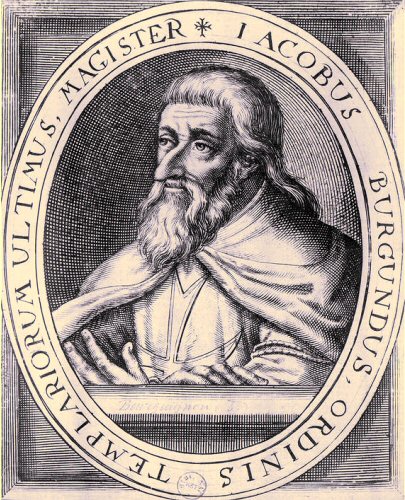 This Masonic legend, mostly told in the Swedish Rite lodges, is a curious variation of stories surrounding the final days of Jacques de Molay. The core of the legend is found in the so-called Strasbourg Manuscript, dating around 1760. The document is in French, although there are some indications that this was not the author’s native tongue. Carl Friedrich Eckleff (1723-1786), the originator of the Swedish Rite, is most likely connected to this document in some way. The manuscript is somewhat oddly entitled Deuxième Section, de la Maçonnerie parmi les Chrétiens (“Section 2, Masonry among the Christians”) and I will probably publish it as a curiosity at a later point. There are some additional later details for which I am mostly following Allgemeines Handbuch der Freimaurerei, by C. Lenning.
This Masonic legend, mostly told in the Swedish Rite lodges, is a curious variation of stories surrounding the final days of Jacques de Molay. The core of the legend is found in the so-called Strasbourg Manuscript, dating around 1760. The document is in French, although there are some indications that this was not the author’s native tongue. Carl Friedrich Eckleff (1723-1786), the originator of the Swedish Rite, is most likely connected to this document in some way. The manuscript is somewhat oddly entitled Deuxième Section, de la Maçonnerie parmi les Chrétiens (“Section 2, Masonry among the Christians”) and I will probably publish it as a curiosity at a later point. There are some additional later details for which I am mostly following Allgemeines Handbuch der Freimaurerei, by C. Lenning.
When Jacques de Molay became certain that his days were numbered, he arranged for his nephew, one count de Beaujeu, to visit him in prison. The Grandmaster had previously noted this young man as someone who could be trusted with the task of keeping the Order of the Knights Templar alive. De Molay instructed his nephew to go down to the crypt in which prior grandmasters of the Order were buried. There, underneath one of the coffins, de Beaujeu was to find a crystal box encased in silver and bring it back to the Grandmaster. The young man followed these directions and returned with the crystal box. De Molay was well pleased with his nephew’s loyalty and made him swear an oath, promising to do whatever it takes to preserve the Order until the day of the Last Judgement. It also turned out that the crystal box that had been retrieved from the crypt contained a precious relic, once given to the Knights Templar by King Baldwin of Jerusalem — the right index finger of John the Baptist. [click to continue…]
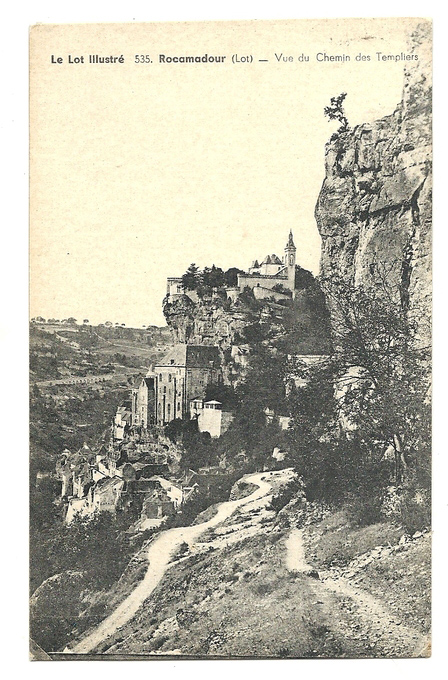 This early 20th century postcard features one of the most picturesque places in Southern France — Rocamadour (Rocamador in Occitan), located in the Lot department. The title for this image reads Vue du Chemin des Templiers (View of the Templar Road).
This early 20th century postcard features one of the most picturesque places in Southern France — Rocamadour (Rocamador in Occitan), located in the Lot department. The title for this image reads Vue du Chemin des Templiers (View of the Templar Road).
Apparently, the local legend has it that the Knights Templar used this road in order to gain entrance into their church without going through town. According to Charly Senet, this name, passed down through multiple, generations has been effaced within the last one hundred years. Several other names have been used instead for more recent postcards of the same place: The Bishop’s Passage, The Road of the Bishop of Tulle, The Holy way.
Although the presence of the Knights Templar in this area has been documented, it is most likely that Rocamadour has never been a major Templar stronghold. It is still sad that memories of the great military Order that once so prominent are being lost in some parts of Europe.
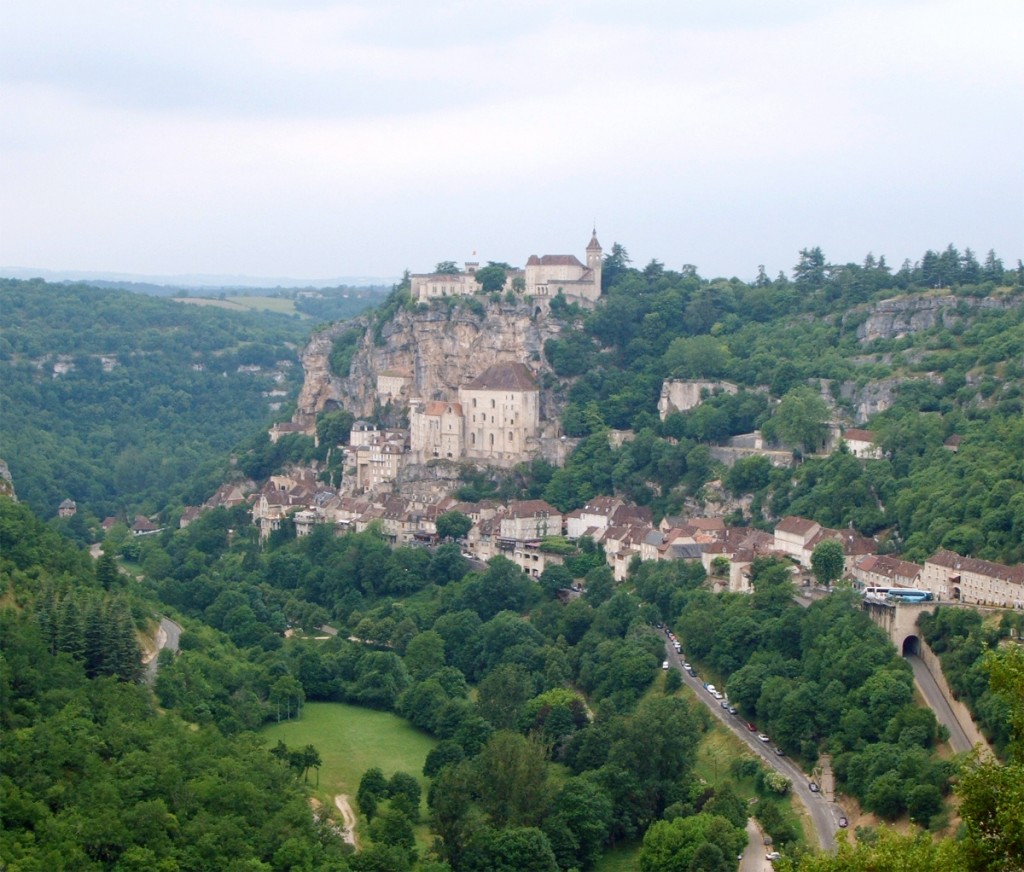
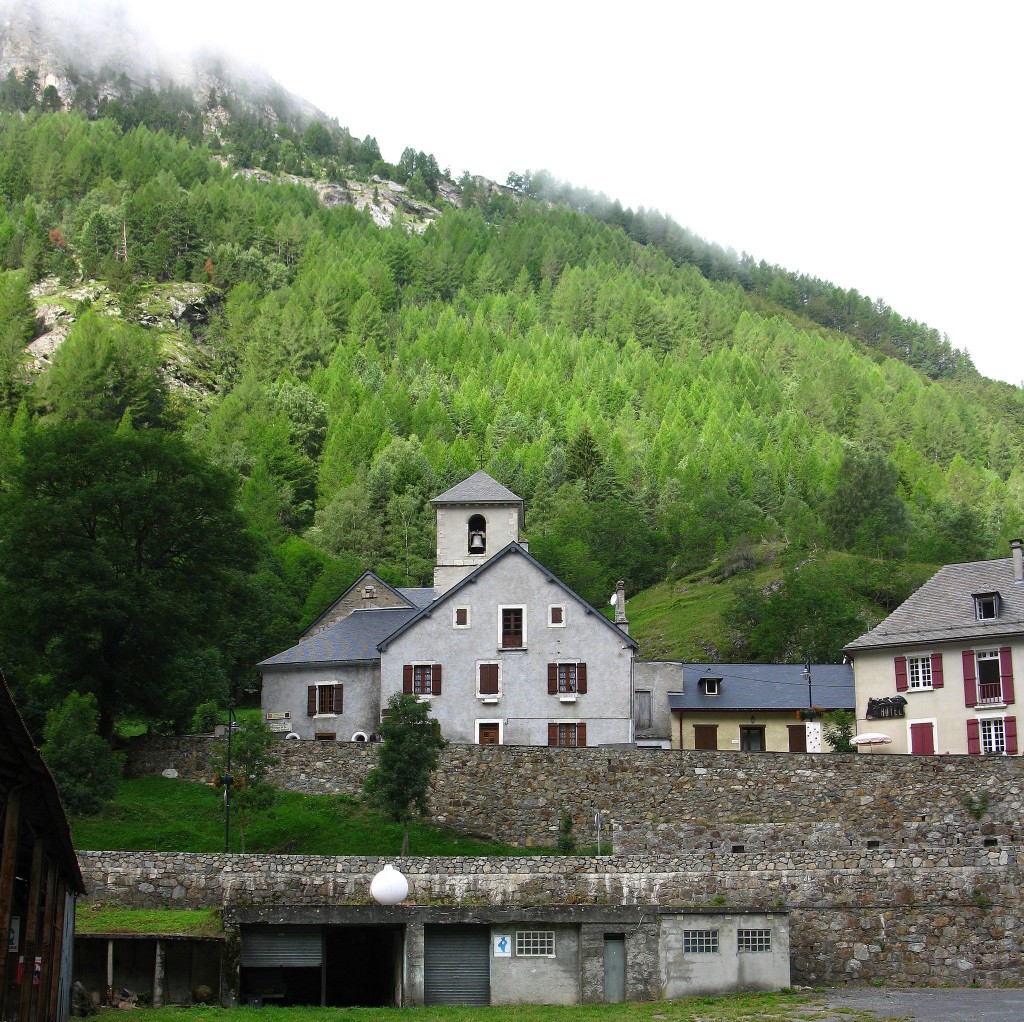 The commune of Gavarnie in southwestern France boasts a unique and strange set of relics. The local church has an enclosed wooden case containing human skulls. Along the top the case there is an engraved inscription: Crânes des Templiers (Skulls of Templars). Perhaps the most colorful legend related to these skulls can be found in Henri Martin’s 16-volume Histoire de France (1839). According to this story, several Knights Templar were martyred in Gavarnie at the time of infamous arrests initiated by Philip the Fair. They say that on every anniversary of the Order’s dissolution, a figure appears at the local cemetery, dressed in Templar uniform. This apparition disturbs the night by asking three times, “Who will defend the Holy Temple? Who will free the Holy Sepulcher of Our Lord?” Following that, the seven skulls respond, “Nobody! Nobody! Is Temple is ruined!”
The commune of Gavarnie in southwestern France boasts a unique and strange set of relics. The local church has an enclosed wooden case containing human skulls. Along the top the case there is an engraved inscription: Crânes des Templiers (Skulls of Templars). Perhaps the most colorful legend related to these skulls can be found in Henri Martin’s 16-volume Histoire de France (1839). According to this story, several Knights Templar were martyred in Gavarnie at the time of infamous arrests initiated by Philip the Fair. They say that on every anniversary of the Order’s dissolution, a figure appears at the local cemetery, dressed in Templar uniform. This apparition disturbs the night by asking three times, “Who will defend the Holy Temple? Who will free the Holy Sepulcher of Our Lord?” Following that, the seven skulls respond, “Nobody! Nobody! Is Temple is ruined!”
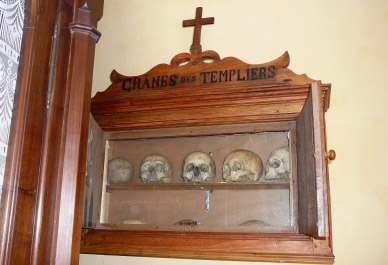 It should be noted that the very existence of the Knights Templar in Gavarnie at any point in time is doubtful. It is more likely that the Knights of the Hospital had some presence in the area. Despite this, the way these skulls have been preserved at a local church is remarkable. It demonstrates the prominent role that the Knights Templar played in the minds of many generations that have passed since the early 14th century.
It should be noted that the very existence of the Knights Templar in Gavarnie at any point in time is doubtful. It is more likely that the Knights of the Hospital had some presence in the area. Despite this, the way these skulls have been preserved at a local church is remarkable. It demonstrates the prominent role that the Knights Templar played in the minds of many generations that have passed since the early 14th century.
See also:
How can I become a Knight Templar? One of the most frequently asked questions!
Legends of the Knights Templar Obscure historic narratives and local legends about the Order.
 This medieval story comes from a collection of Old Occitan Vida — “Lives” of famous and not so famous troubadour poets. It represents a particular genre popular in the very first well established secular literary culture since the fall of Rome. For the most part, troubadour poets were dedicated to ideals of courtly love, but their works also reflected events of the time, including the crusades. Although it is highly unlikely that this biography of Jaufres Rudels is rooted in reality, one can get (very incidently) a good idea of how respected the Knights Templar were during the 13th century, when this text was written. I am including a version in the original Old Occitan (taken from Revue historique, Volume 53, 1893). If you have any background in Romance languages you may be able to read a great deal of this text. It is actually used by William D. Paden in his “Introduction to Old Occitan.” This language survives today as Modern Occitan, a regional language in Southern France.
This medieval story comes from a collection of Old Occitan Vida — “Lives” of famous and not so famous troubadour poets. It represents a particular genre popular in the very first well established secular literary culture since the fall of Rome. For the most part, troubadour poets were dedicated to ideals of courtly love, but their works also reflected events of the time, including the crusades. Although it is highly unlikely that this biography of Jaufres Rudels is rooted in reality, one can get (very incidently) a good idea of how respected the Knights Templar were during the 13th century, when this text was written. I am including a version in the original Old Occitan (taken from Revue historique, Volume 53, 1893). If you have any background in Romance languages you may be able to read a great deal of this text. It is actually used by William D. Paden in his “Introduction to Old Occitan.” This language survives today as Modern Occitan, a regional language in Southern France.





